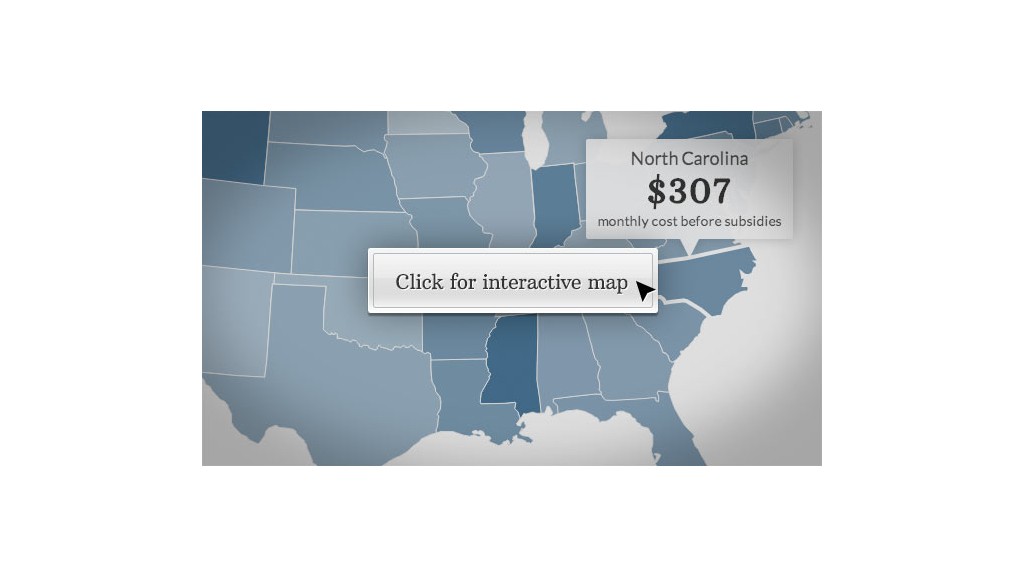How much you'll pay for Obamacare could partly depend on how much your state fought for you.
In Oregon and Maryland, state regulators challenged the premiums that insurers wanted to charge for Obamacare policies, forcing the companies to lower their rates.
But in states like Florida and Texas, regulators took a hands-off approach, allowing the premiums insurers filed to sail through.
Like most things Obamacare, the treatment was laced with politics.
Several states run by Democrats were active and public about negotiating with insurers.
Some Republican-led states disassociated themselves from the process, sending the filings to the federal government, which does not have the authority to disapprove of rates.
Rate reviews by states have proved effective in lowering premiums, according to a study last year by the Kaiser Family Foundation. The average rate allowed after a review was 2.6 percentage points lower than the average rate initially requested in the individual market, though there was a wide variation between states.
"If states were more aggressive in reviewing rates, you saw more of a decrease," said Cynthia Cox, policy analyst at Kaiser.
Share your story: Are you signing up for Obamacare?
Oregon fell into this category. While reviewing rate filings submitted for its state exchange earlier this year, Oregon's insurance commissioner peppered the 14 insurers with questions in writing and at public hearings to justify their proposed premiums. In some cases, regulators contested the assumptions the insurers used for allowing everyone to apply for coverage regardless of pre-existing conditions. At least one insurer made a mathematical error, and others didn't adequately document their projections for the rise in medical costs.
Ultimately, the commissioner lowered rates for individual plans up to 30%. The average premium for a mid-range plan for a 40-year-old in Portland is $201 before federal subsidies, according to Kaiser.
"It's important that there is someone really looking at these rates to see that they are justified and reasonable," said Laura Cali, the state's commissioner.
Florida, meanwhile, took the opposite approach. Legislators, who defied the governor and refused to extend Medicaid to all poor adults, passed a bill that suspended the insurance commissioner's power to approve rates for two years. So the insurers pretty much got to charge whatever they wanted since the federal government can't argue about the premiums either. The average mid-range plan premium is $269 for a 40-year-old Miami resident.

State regulators said that Florida has a very competitive insurance market and that the rates came in close to one another and in line with national figures. And because insurers had to create new products that met Obamacare standards, the insurance department had little experience to go on.
"It would have been very hard for us to challenge a company's rate filings," said Wences Troncoso, deputy commissioner in the state's Office of Insurance Regulation.
But other experts said that the state missed a chance to secure a better deal for its residents.
"Florida consumers could conceivably end up paying unreasonable rates that may have been reduced or withdrawn had they been reviewed by Florida's own OIR," wrote Sally McCarty, senior research fellow at Georgetown University Health Policy Institute, in a blog post.



